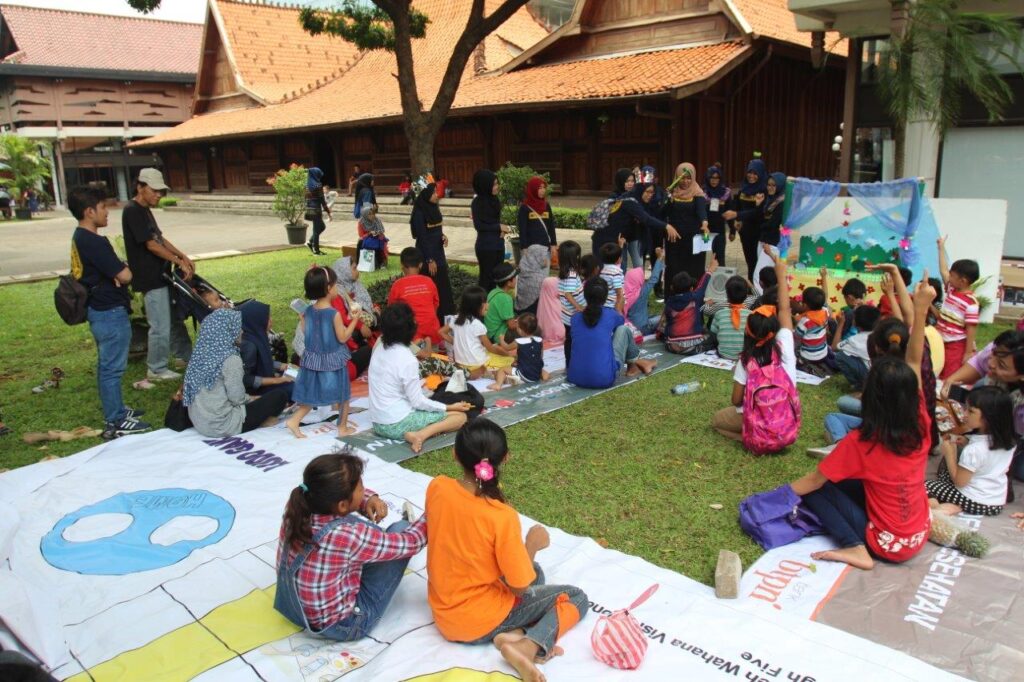As part of Indonesia’s National Nutrition Day 2017, our team in Indonesia organized an interactive quiz for children and their parents named “Know Your Food Nutrition Facts.” The event, called Pesta Anak Indonesia or “Party for Indonesian Children”, was held at Bentara Budaya Jakarta, a cultural institution in Jakarta. Using activities such as drawing, a quiz, listening to stories, and playful games, the children learned to read food labels and understand the nutritional composition of their food.
This event was conducted by GKIA, or Gerakan Kesehatan Ibu dan Anak (Indonesia’s Maternal-Child Health Coalition), of which Helen Keller International (HKI) is a member.
Mrs. Rima Zakiyah, HKI Staff Member, asked the children about the nutrition contents inside various food items, including fiber, sugar, salt, and fat. The children answered by pinning pictures on a styrofoam table of the four categories.
Mrs. Rima also engaged the parents in a game on how to read a food label, particularly the nutrition facts. It turned out that most of them had no idea about the number of servings per package. The game also revealed that most adult visitors did not know the Nutritional Adequacy Score per day for sugar, salt, and fat. Mrs. Rima told them about the World Health Organization’s recommendations for consumption.
Labels are an important vehicle for communicating product information. ARCH has conducted research on labeling of complementary foods for children under age two, with the goal of informing national legislation and global guidance to ensure labels support optimal infant and young child feeding practices. In a cross-sectional study, ARCH assessed the labels of commercially produced complementary foods sold in Phnom Penh, Cambodia; Kathmandu Valley, Nepal; Dakar Department, Senegal; and Dar es Salaam, Tanzania, and found that none of the labels complied fully with international guidance and national legislation. To support better nutrition, manufacturers of commercially produced complementary foods should ensure that products are appropriately labelled to support global infant and young child feeding messages and comply with national law and global best-practices.

